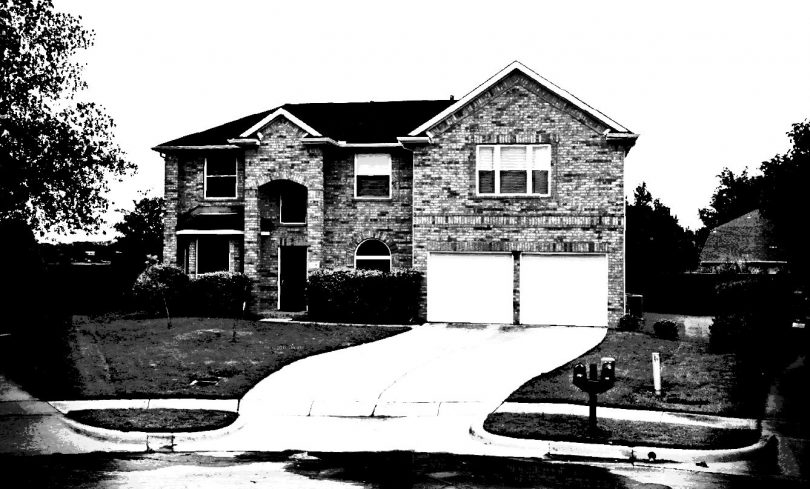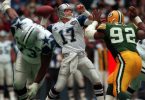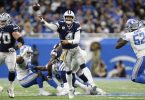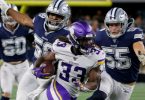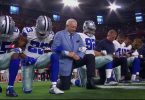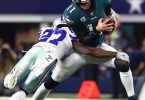In the 1990s, the Dallas Cowboys played in four consecutive NFC Championship Games and won three Super Bowls.
Despite what you are about to read.
“They obviously took care of business on the field,” says Anthony “Paco” Montoya, former personal assistant of Hall of Fame receiver Michael Irvin. “But, man, nobody partied like them. Fights. Women. Drinking. Orgies. I’ll just say this: If there would have been smartphones and social media back then, the Cowboys wouldn’t have been able to field a team come Sunday.”
Montoya, a long-time fan who grew up in the Lakewood neighborhood of east Dallas and attended games in the Cotton Bowl for 50 cents in the 1960s, got his start with the organization in 1985. He was an employee at Athletic Supply sporting goods on Mockingbird Lane in Dallas when into the store happened Cowboys safety Michael Downs.
“I was a big Cowboys fan, we had the same birthday, and we just sort of hit it off,” Montoya said Tuesday on our PressBoxDFW Live! vodcast. “Next thing you know he offered me a part-time job at Valley Ranch. I told him they didn’t even have to pay me.”
Downs, a homegrown star who attended South Oak Cliff High School, was a Cowboys captain and all-NFC safety in 1984-85. He had also recently taken de facto ownership of the Cowboys’ traveling basketball team – the Hoopsters. Ring of Honor receiver Drew Pearson founded the troupe in the 1970s.
Downs, a favorite of legendary coach Tom Landry, showed Montoya the ropes and integrated him into the Cowboys’ inner circle. Paco was soon attending the legendary barbecues thrown by behemoth defensive end Ed “Too Tall” Jones at his home in North Dallas. Attendees included the likes of Hall of Fame running back Tony Dorsett.
“I learned pretty quick how it all went down,” Montoya said. “Before 7 p.m., anyone was welcome. Kids. Grandmothers. Whatever. But at sundark, Ed was like ‘Thanks for coming, but you gotta go’.”
And after 7?
“It was unbelievable,” said Montoya. “He had a spa inside his house. He had company in the spa with him and … It’s the first time I’d ever seen women sucking on a man’s toes. Of course, there was a lot more going on than just that.”
By 1988, Paco was entrenched as a trusted member of the Cowboys and manager of the Hoopsters. (In the 1980s, a $1,200 fee would fetch an organizer 10 players; after two Super Bowls in the 1990s the amount inflated to $125,000 for only five players). But when Downs left to play with the Cardinals, there was a fight – literally – for “leadership” of the squad.
Eugene Lockhart was a poor man’s Mike Singletary. A sixth-round draft choice out of Houston, the self-anointed “Hittin’ Machine” started at middle linebacker in 1984, led the Cowboys in tackles and was named to the NFL’s All-Rookie team. In 1988, Irvin was a brash rookie No. 1 draft pick with a hardscrabble background as one of 17 children and a megawatt ego.
Torch, meet kerosene.
“Eugene was running the Hoopsters and, like he’d done his whole life, he was bullying people,” Montoya remembers. “He considered me an outsider, so I got picked on. I got tired of it. But more importantly, so did Mike.”
On a road trip in Odessa, Irvin told Lockhart to “chill out” and stop tormenting Paco.
“Gene said ‘I’m the Machine and you’re just a rookie. I’ll beat your black ass’,” Montoya said. “Mike told him, ‘I’m from the projects, bro, and this ain’t gonna cut it’. It was on.”
When the dust settled in the hotel room, there were two broken beds, a busted dresser, one shattered mirror … and a new captain of the Hoopsters. Playmaker 1, Hittin’ Machine 0.
“The ghetto just came out in Mike and he kicked his ass,” Montoya said. “After that, Gene stopped playing for the Hoopsters and Mike said, ‘From now on, you work for me’.”
Irvin paved Paco’s path to new owner Jerry Jones in 1989. Montoya became the receiver’s right-hand man. Drove him to run errands. Picked up food. Served as chauffeur for his wife, Sandy.
“I was driving around with Michael Irvin in his BMW M3, the one the University of Miami gave him,” says Paco “I was in hog heaven.”
Montoya’s job description was framed by two mandates: 1. “Bring me the finest girls you can find.”; 2. “Always get me to practice on time.”
“I did what I was told to do, even if it meant interrupting him at 6 in the morning for a 7 o’clock team meeting,” Montoya said. “He’d get upset at me in the moment. He’d say, ‘Leave me alone. Just one more time!’ But later he’d thank me. Mike’s addiction was never drugs or alcohol, it was plain and simple – women.”
By the early 1990s, Paco answered to only two men. Two of the most powerful figures in DFW and, for that matter, the NFL. Irvin and Jones.
That power – through respect from above – made Montoya the perfect caretaker for a place right out of Hugh Hefner’s wet dream.
The “White House” was actually brown brick. A two-story home on Dorsett Drive, with five bedrooms, three baths and a two-car garage, in a cul-de-sac just a couple of Mike Saxon punts from the Cowboys’ practice fields in Valley Ranch.
“You could see it from the monkey bars at the facility,” says Paco.
The idea – a safe space to “play” – was hatched by Nate Newton. The monthly lease on the house was in the name of naïve receiver Alvin Harper. It was paid for – via “kitty” – by players sprinkled throughout a roster that won Super Bowls in 1992, 1993 and 1995. There were no permanent residents. On call was a cleaning crew, hopefully outfitted in HazMat uniforms, and a handyman, hopefully adept at repairing dented headboards and smashed doors authored by the angry foot of an oft-impatient Charles Haley.
The Bunny Ranch in Las Vegas had Dennis Hof. The White House in Valley Ranch had Paco.
“It was my job to keep it stocked,” says Montoya. “With beer. Wine. Liquor. Batteries. Toys. Boxes of condoms. Entertainment. You name it.”
Typically on Fridays after practice, Irvin and Montoya would survey multiple topless bars on a scouting mission. They’d pick out 10 girls and “invite” them to the White House for a couple days.
“No one in that house knew the word ‘no’,” Montoya said. “It was just a non-stop party, non-stop orgy. Everything you can imagine, then triple it.
“It was the place the Cowboys went when they wanted to be out of town, but still in town.”
Despite the constant hum of Sodom and Gomorrah and the parade of limousines and Ferraris, Montoya said Irving police never once knocked on the front door. And, to his knowledge, illegal drugs weren’t present.
“I’m just saying I never personally saw it,” Paco clarified. “I didn’t wanna see it, because I never wanted to end up in a courtroom having to testify to this or that. When I turned my back, I assumed there were drugs. But I didn’t play that game. Never got involved in that part of it.”
The White House eventually imploded not because of loose morals, but rather a dangerously relaxed entrance policy. Established to exclusively entertain players and their guests, it branched out into strangers with little or no investment in the goodwill of the team or the anonymity of the utopia.
“We had friends of a player bringing in their brother, who was a second-string receiver in college but wanted to be first-string, so he brought in his quarterback to be taken care of,” explains Paco, now 57 and a successful boxing promoter in Dallas. “It was just too much. It got too hot.”
The house still stands. By all accounts, it’s occupied.
“I’m hoping the people living there don’t know,” Montoya chuckles. “Because if their walls could talk … shiiiiiiiit.”
In the 1990s, the Dallas Cowboys were one of the NFL’s all-time greatest dynasties. Despite what you just read.
Or, was it because of it?

